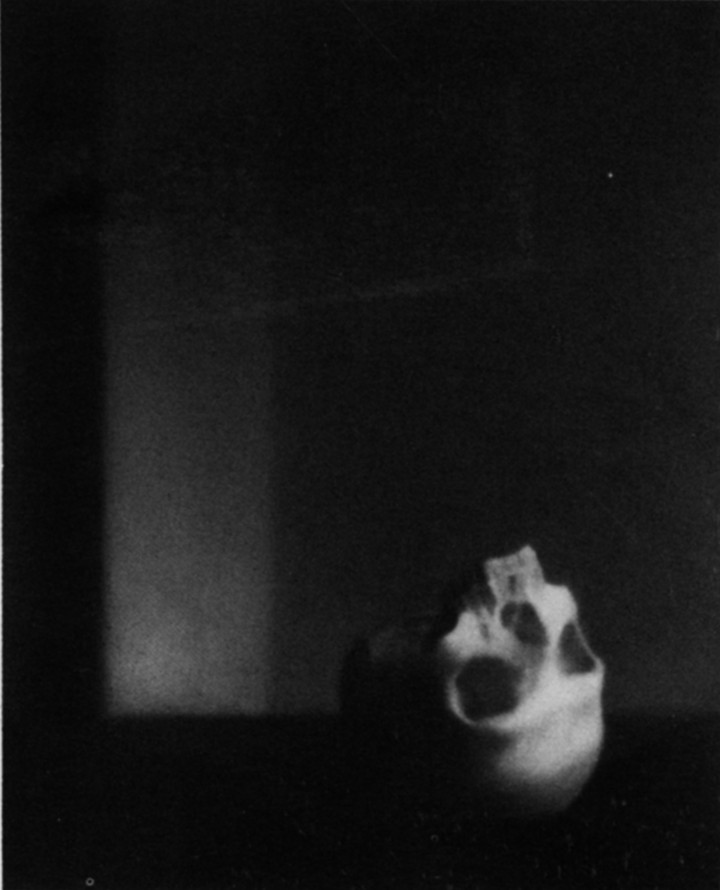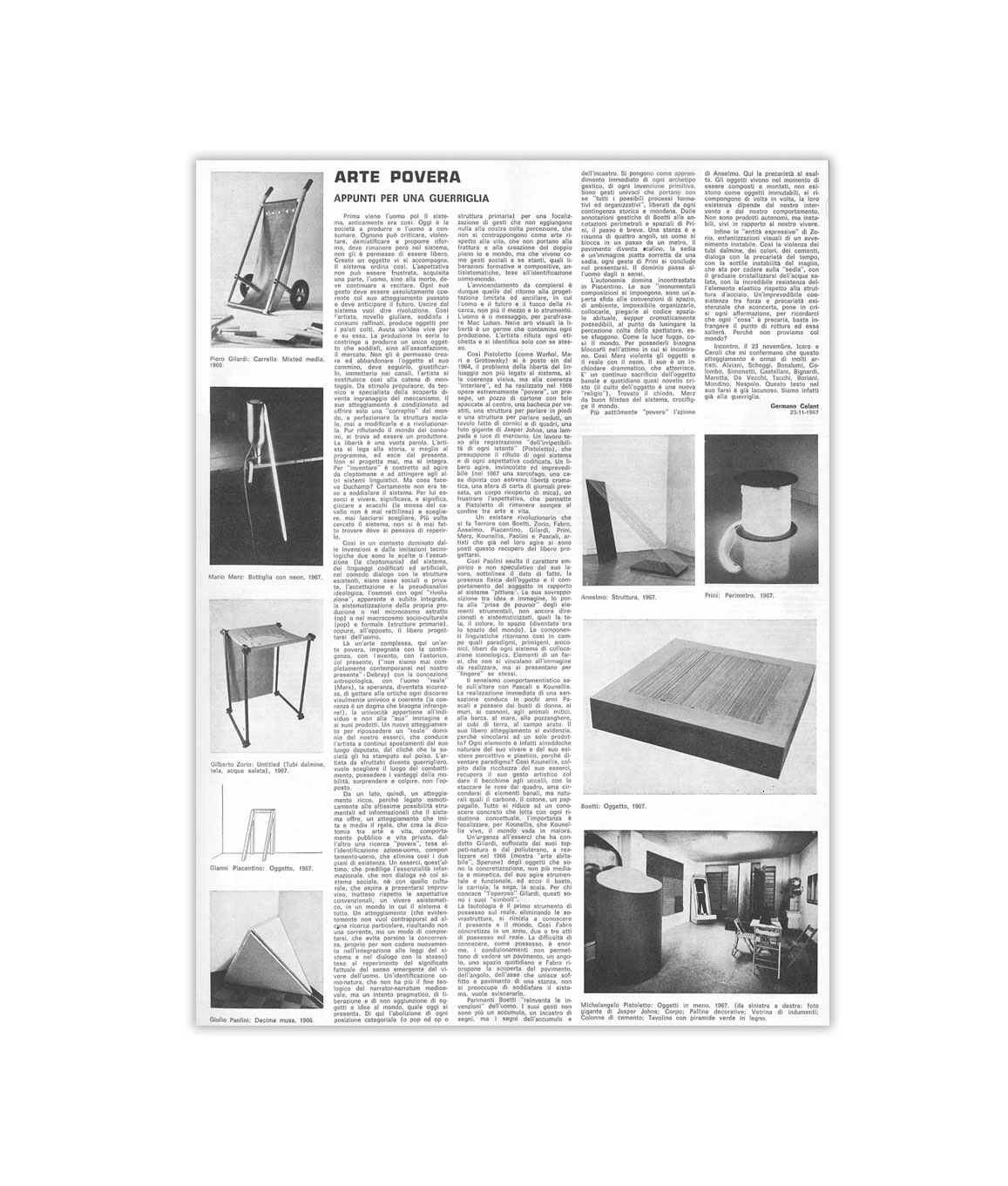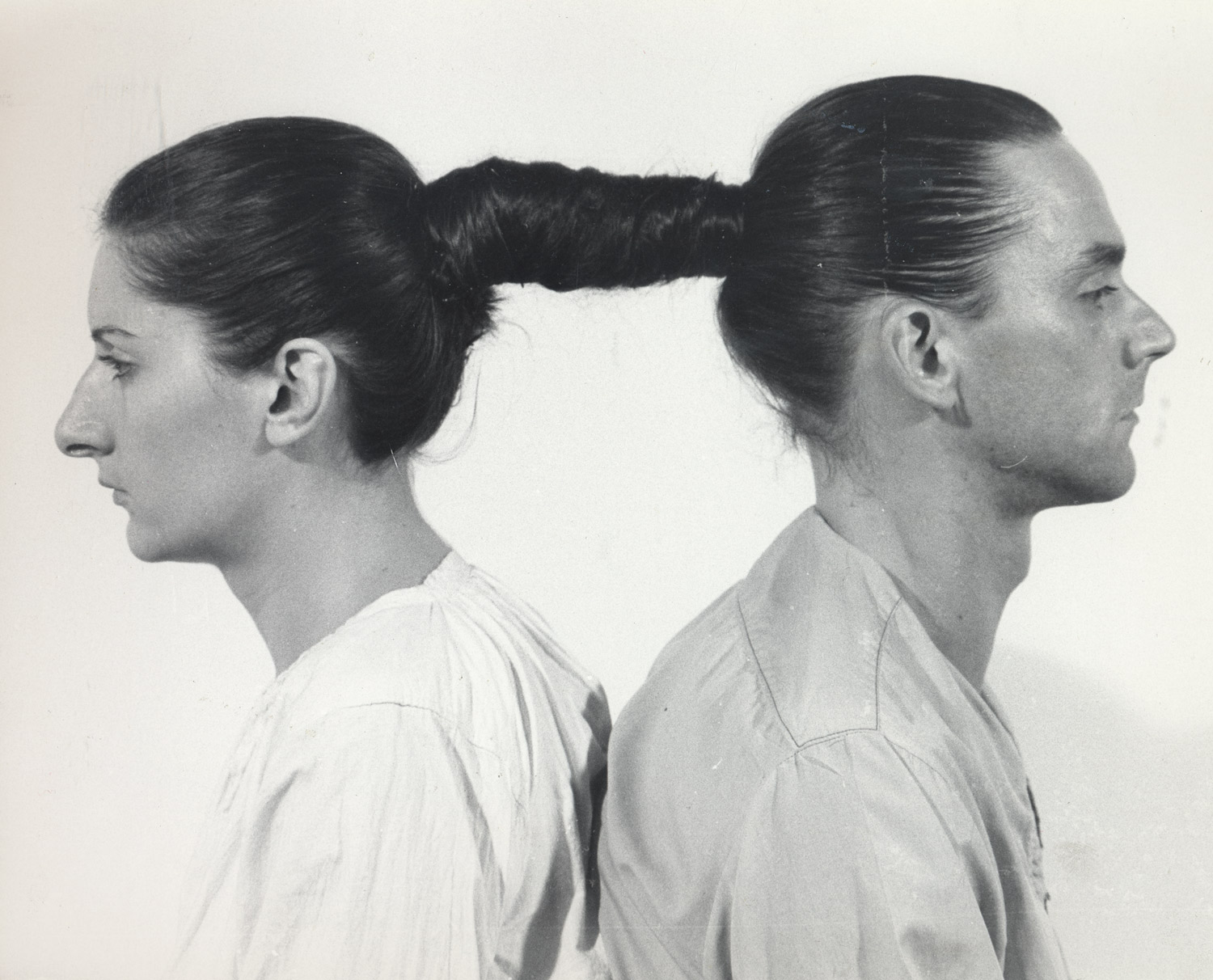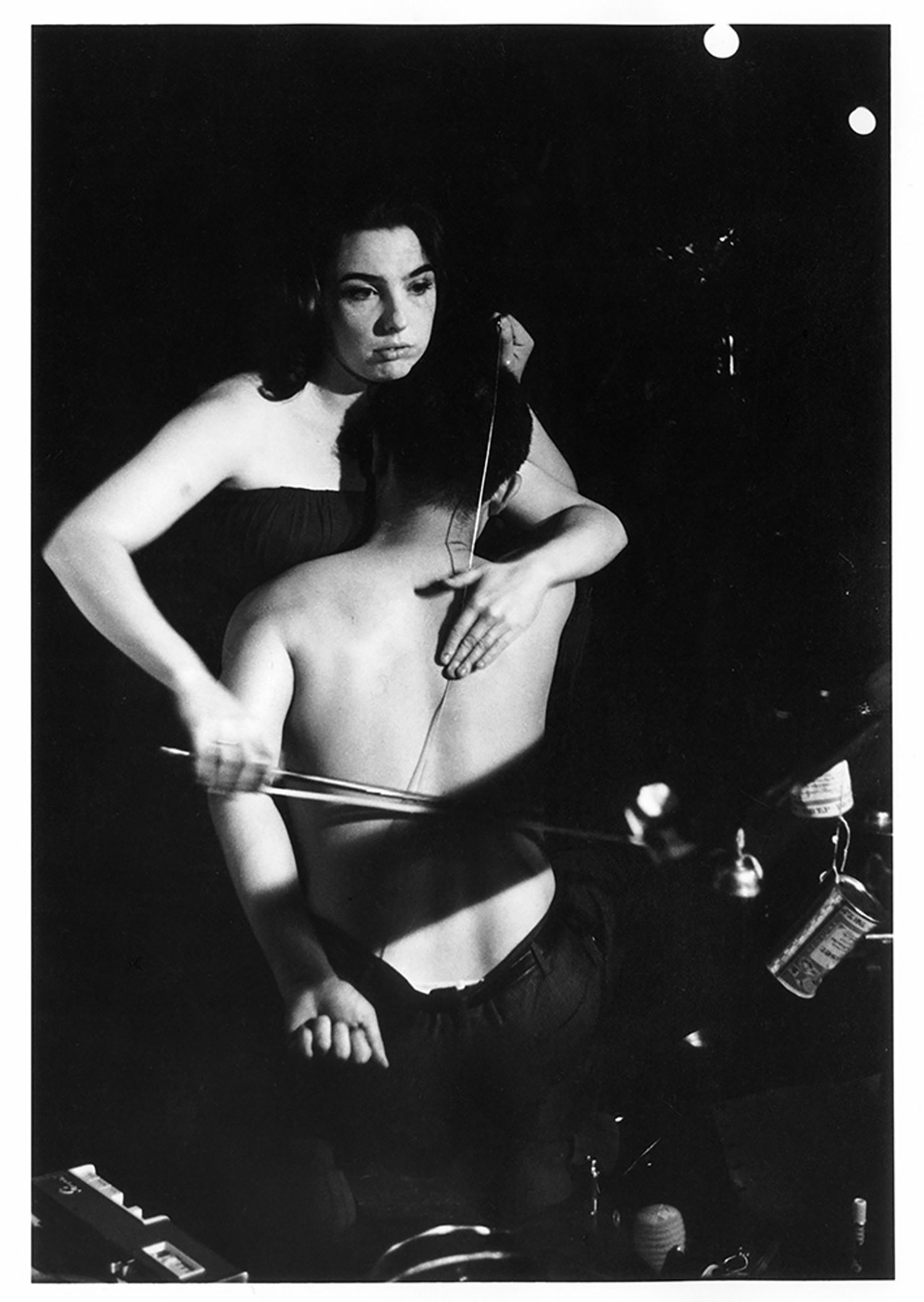
Annunciation after Titian
Is it only by chance that, as one of the few works that Gerhard Richter has quoted from art history, he chose an Annunciation and decomposed it into a series of color paintings? The interesting painterly aspect is quite clear: the decomposition of a figurative image into an abstract one; the transformation of local color into autonomous color; the derivation of a series from one single picture; the reversal of the order in which oil sketches and paintings traditionally come about; the suggestion of an art for art’s sake.
These effects and strategies could have been exercised by using any historic painting whatsoever. So why did Richter chose an Annunciation in particular, and devote two entire series of transformations to it? Is it such a travesty of an annunciation that a terrestrial i.e. painterly message, replaces the divine one, which vanishes into color?
Does the religious promise of this scene blur before our eyes in exactly the same way it has lost credit and meaning in our daily lives? Are these two series about the painter Titian, who painted this scene as a believer, and about the painter Richter, who has lost faith in this and other scenes?
Could this be a recapitulation of the history of art whose autonomous and even abstract development has come about only in proportion to its loss of religious commissions and bequests? Do these pictures celebrate the triumph of autonomy?
Travesty and triumph are attitudes that do not seem to fit Richter. He is too particular about everything, even and especially imprecision, fadedness, and unreality. One would have expected him to shrink from Titian’s tremendous presumption of painting an angel, choosing the only apparent possibility of making an angel paintable, dematerializing it. In any case, it is not any arbitrary angel that appears and disappears in this scene, but the angel par excellence, God’s messenger. In order to understand Richter’s treatment of this motif, we should take a look at a little-known cabbalistic legend, which could prove to be the key to more than this particular work of Richter’s.
The legend of the oblivious angel
According to this legend, each millennium God sends an angel to Earth to announce the coming of the true Messiah.
This angel’s preparation lasts for years before he sets out on his voyage to Earth, the duration of which is beyond man’s powers of imagination. According to Jewish tradition, none of these angels ever managed to bring their tidings of joy. Most of them, almost all of them, got lost in the infinite vortices of the universe, because during the long journey they forgot the reason and destination of their mission, and thus lost all orientation. (Franz Kafka, an untiring parodist of the cabbala, attired the legend in the figure of the imperial messenger, who loses courage even before reaching the exit of the emperor’s palace).
The few messengers who succeeded in reaching the Earth — the legend speaks of two or three at the most — indeed reached their destination, but had already forgotten the wording of their embassy. Thus their visible appearance for man, with which they had been endowed for their mission, was lost with their failure, and they were condemned to roam the earth without form.
According to the legend, these messengers of nothing took revenge for their fate by trying to rob the addressees of the forgotten message of their appearance, so that the latter appeared to blur before the eyes of those around them, and finally vanish into thin air, leaving the realm of the visible. Not only did they trouble the pathetic addressees of their forgotten embassy, but they also haunted other unsuspecting souls, because they hoped that by dissolving them too, they could amass perceptibility, so to say, and themselves become visible. As soon as they were successful in stealing the appearance of enough victims, they gained perceptibility and were able to mingle anonymously amongst men in any form they chose. The ultimate trial of their sinister triumph came with the first mirror in which their image could be recognized. The philosophic maxim esse est percipi (being is being perceived) must have been excogitated by one of them who appeared as the Irish bishop and philosopher, Gorge Berkeley. Another, Edgar Allan Poe, hinted at the theft of perceptibility in his story Oval Portrait, in which an artist’s model wastes away proportionately with the painting’s progress, finally dying on its completion. More precise knowledge of the fate of these wanderers is provided in the numerous partial confessions in H.G. Well’s works, particularly in The Invisible Man, published in 1897.
The evil eye
Richter’s paraphrase of Titian presents the fate of disappearance in the moment failure sets in. It is a subject that is often either openly stated or merely alluded to in Richter’s work. There is another painting in which the angel vanishes (Engelskopf 48/7, 1963-65). The series “Forty-Eight Portraits” (324/1-48, 1972) starts in the catalogue of the artist’s oeuvre with the Portrait of H. G. Wells, and the first installation of the portraits in 1972 Venice Biennale presented the Portrait of Franz Kafka in the exact center of the apsis of the German Pavilion. Mirrors appear frequently in his work, and as late as 1981 he had himself photographed before a huge mirror covering the wall of his studio, with his Spiegelbild, as if he still owed proof of his visibleness.
The decisive proof for the affinity of Richter’s work to the fate of the oblivious angel is provided by the central role in his oeuvre played by the curious manner of dissolving images before our eyes, driving and painting out their visibleness. He lets them vanish under his manipulation, as if under the spell of the evil eye. Blurring into imprecision and ghostliness, they haunt through pigments and solvents and spookily evade the viewer like old, but fond memories that can no longer be brought into focus. For a long time his strategy was to decompose photographs and media images as if using acids and caustic solutions until the recognizable figures, landscapes, and objects were reduced to blurred and jagged contours on the canvas.
Photographs and media images that fell into his hands wandered, in respect of their utility for this subtle torture, into his collection. In an exhibition of this material in 1976 in the Museum Haus Lange in Krefeld, Richter reveled in the presentation of the extent to which he held these candidates in reserve for this torture. As if he envied these images for their natural visibleness, their effortless perceptibility, he makes them pay for their easy-going existence and attempts to find out the secret of the visibleness: “And in such manipulation of the image, Richter believes — and this is his great hope — to be able to discover something about the reality of the visible.”1

The loss of the message
A further affinity between the legend of the oblivious angel and Richter’s painting lies in the esthetic aspect. In fact, such an angel could choose no better figure for his materialization than that of the modern painter. For painting is a precise metaphor of his problem: it no longer has a message, and that is its curse. It is this loss of message that Richter represents in his Titian paraphrase — like an image within an image. But why should this loss still be the subject of contemporary painting, when it has long since been agreed that with the Renaissance and the Reformation and, at the latest, with secularization, painting was freed of its religious bonds and the era of its metaphysical unemployment began? The loss of message is now and again still a central theme for the modern painting, because of the relapses of Marxism where painting was captured in an ideologically defined and motif-connected function within society. Richter, who at the age of twenty-nine abandoned the communist part of Germany for the capitalist one, freed himself from this claim. Like few other painters of his generation, he paid the price for this dilemma of ideological unemployment in the West. His work circles this dilemma like a black hole. In the middle of the 20th century Richter had laboriously to relearn what the modern really meant, the modern that the West was already anxious to bury. For painting, modern means above all that, along with the loss of meaning and ideology, the motif also became redundant, that it lost the narrative and appellative basis of its craft, and became independent only as painting on painting without any social relevance that could be comparable to the lost one. This is the price of its autonomy, its freedom from any ideology, whether religious or political. Once he had rid himself of ideology, Richter proved himself to be resistant to any new temptation. And so he was resistant to the ideology of the abstract that he met in the West, the aesthetic words of the Cold War that saw a universal language in abstraction (Werner Haftmann) but confined it to the “Free West.” Didn’t even Kandinsky, who authoritatively propagated the definitive adieu of painting from its illustrative function, hold the ideological back door of anthroposophy open (which Beuys also used before ecology and social sculpture joined in his work)? Richter did not look for such ways out, but he still could not keep from rubbing salt into this wound of painting. This is the reason for his struggle with the motif, the cluster to which his apparently disparate work can be arranged in a kind of anamorphosis. Here his painterly fate resembles that of Baselitz. Jürgen Harten, who confronted these two painters in the Düsseldorf Kunsthalle in 1981, enabled the visitor to see that, concealed under the superficial equation ‘painting on painting,’ there is the background of the communal experience of border crossing, which mistreats the motif, dissects it, and inverts it, because it cannot do either with or without a motif. The message of both painters is excluded, both fend off the demand to the same extent through the most destructive form of philosophizing and argue like sophists. For example, when Richter objects to the valuation of his blurred paintings, stating that painting, purely technically speaking, cannot be blurred, this is a grandiose bluff that suppresses the fact that blurredness is not a technical, but a mimetic category. Like Baselitz, he steadily maintains that his paintings have no mimetic reference to the external world, which roughly sounds as credible as if a porno-film producer would solicit the release of his film with the indication that it consists only of actors and an invented treatment and is basically but a roll of exposed celluloid.2
Visual sadism
There is a visual sadism that perception psychology has failed to teach us. The development of modern art compels it to make up for this failure. Baselitz and Richter are two extreme examples. Whereas Baselitz, through a presentation of narrative elements and their painterly inversion, forces the intellect and sight of the viewer to act incongruously, Richter torments him only by violently handicapping the eye in its normal function. Richter’s painting are perceived by the viewer as if through a useless camera, for the attempt to focus the lens, which is possible with a normal camera, is in vain for the eye, which focuses in front of or behind the surface of the image without gaining any depth of focus.
The effect is as irritating for the eye as Bridget Riley’s visual assaults. This impression remains in his work, even when — as in his paintings of cities — it isn’t manufactured by blurring the motif, but by a destruction of it with pastose contours. Here the viewer interpolates in vain between jagged surface structures, addressing his tactile sense, and the motif impression that sets in when he tries to ignore the interference of the paint treatment — which of course he is unable to do. For Richter drives a wedge into the viewer’s senses by presenting a form of painting in which touch refuses to unite synesthetically with vision — and thus a synthesis of reception programmed by painting up to the 19th century is prevented.
Richter sabotages not only the synesthetic transformation of visual into tactile sensation, he also gives the visual sense no further chance. As triumphant as it may be today to be the owner of a Richter painting, it is difficult to imagine that there are collectors who, day in day out, expose themselves to this torture of the eye, merely by having a blurred Richter painting hanging in their living room or office. Doesn’t every cell of the retina resist this unreasonable visual demand? Aren’t these pictures like poisonous bait on which the eye cannot sufficiently feed, because its visual hunger still remains?

Broadness and diversity
Unlike Baselitz, Richter has left himself a broader field of play — but can what he practices with painting still be called play? Doesn’t he take its component literally apart, like a child, in all seriousness, destroys a toy once it has discovered that its movement has no hidden secret, but just a simple mechanism? The color plates, panes of glass, mirrors, and the “Grey Paintings”: aren’t these the atomized components of the painting that Richter lines up in a disillusioned way, just as he had deprived photographs of their focus? The ruins of painting whose synthesis will no longer work? In thus dissolving painting into the single aspects of its illusory achievements, he has encountered abstraction, a new field of play and a new manner, with the aid of which he, like Muenchhausen, has pulled himself out of the marsh by his own hair.
Who could have foreseen that an unused lot could still be found on the mowed field of abstract painting (around which Baselitz internationally makes wide detours)? Richter has found it in his blurred abstraction, in abstract paintings that are enlarged out of focus on the canvas from small color studies and sketches. In these, not only does he disconnect the tactile sense from the visual sense, he also succeeds in duping the eye’s mimetic reflex in a totally new way. As if as a reward for his efforts of illusionization, he has been afforded an exit with these paintings and has regained a new, unmistakable synthesis of painting that — according to the title of some of these works — has found its way back to “Fiktion” (Fiction). With this group of works — perhaps his most pregnant contribution to modern painting — he has not simply tied another knot of disillusionization in his labyrinthic oeuvre, but as on a spiral of development, attained a higher point of rotation. Here painting as fiction of painting becomes representative and, in fact, in the usual manner, blurred. His relief can be felt by the fact that he has followed this work group with a second group of abstract paintings, which are beginning to dominate his oeuvre. The latter paintings, painted and scraped onto the canvas, aim, with a specific and balanced mixture of blurredness, contrasting intensity, and layering, at an effect that would have caused Goethe to burn his Color Theory. As if he were particularly satisfied with this coup, Richter has flanked the large paintings with a striking series of small watercolors that present the apparently impossible transformation of a painterly technique into the small species of the watercolor like a superior conjuring trick.
A melancholy of virtuosity
However Richter’s work has not become more cheerful, as would seem to be the case in the blazing and luminous colors of his latest paintings and watercolors. He has maintained the psychological temperature characteristic of his entire work, the temperature that was perceptible for all in the rooms of the Düsseldorf retrospective: the temperature of melancholy of a virtuoso without a billing. Like a champion athlete he keeps himself fit with daily training, waiting to participate in an olympics in which his discipline is no longer included. It is as if he wants to be prepared for when the forgotten message one day quite casually occurs to him again. His melancholy is not of a psychological nature, for Richter also thoroughly drives this manner of observation out of his painting. His tenacity has already turned into an aesthetic attitude: the attitude of sobriety, the cardinal virtue (not always cultivated by his followers) of Marxism. It impregnated Richter against the Western esthetic ideologies that he encountered; it put him into a position to orient himself directly with success in the West, in that system around which ideologies and myths creep, even esthetic ones.
The painter without an ideological commission proceeded forthwith onto the market, the estimation of which was made possible in part by his Marxist basic education. There is hardly another painter of this century who has established himself with his work so circumspectly in the new home of painting exempt from all tasks, as Richter. Few others have supplied the market with such superiority as he has. Even a temporary insecurity about “what could be painted” is coined by him in a series of grey paintings.3 It is the exact opposite of opportunism, with which Richter is often reproached; it is the attempt not to surrender to the changing laws of commerce dictated in the shoving and pushing of the art market, but to insure his own basis through a rich differentiation of the oeuvre. What could be seen as indifference in Richter’s attitude, can be recognized as an attitude of self-protection in comparison with the disproportionately large and ruthless indifference of the market.4 What could seem to be a repeat of the change of style that Picasso introduced into modern art in an act of liberation, has been mutated in Richter to diversification, to be exemplarily marveled at in the splendor of his work’s abysmal perplexity. This diversification reveals itself to be the message of his work, one that in any case is understood as such by younger painters like Jiri Georg Dokoupil, for example, who consciously and just as successfully practices it.5 It is the message of how one can survive as a painter in the art market, which today favors painting, only to discard it tomorrow — it may not be a joyful message, but it is rich, at least rich in facets.
from Flash Art n°128, 1986





